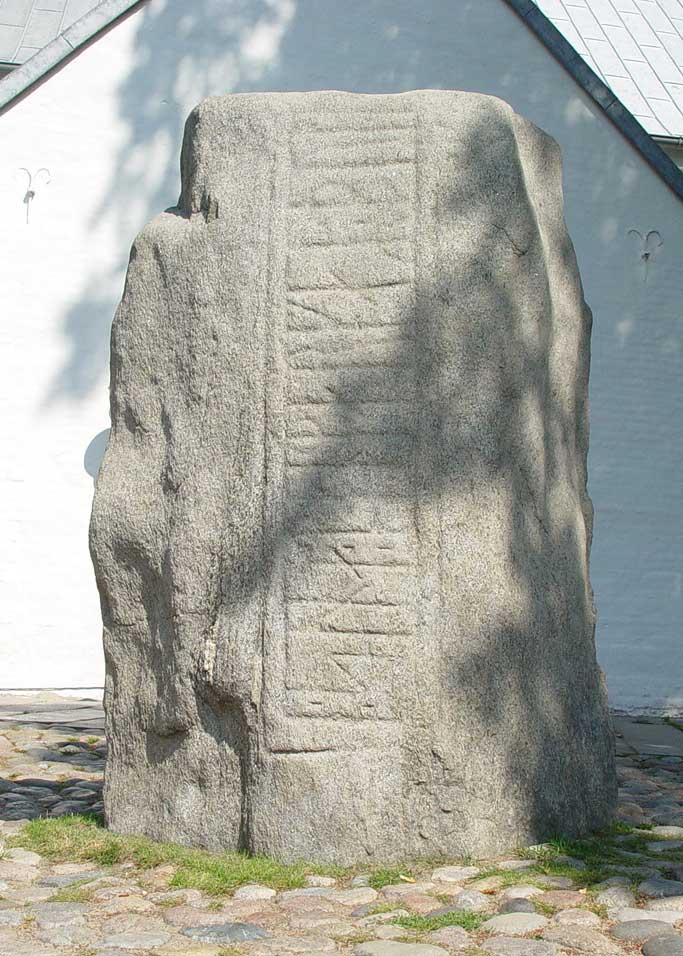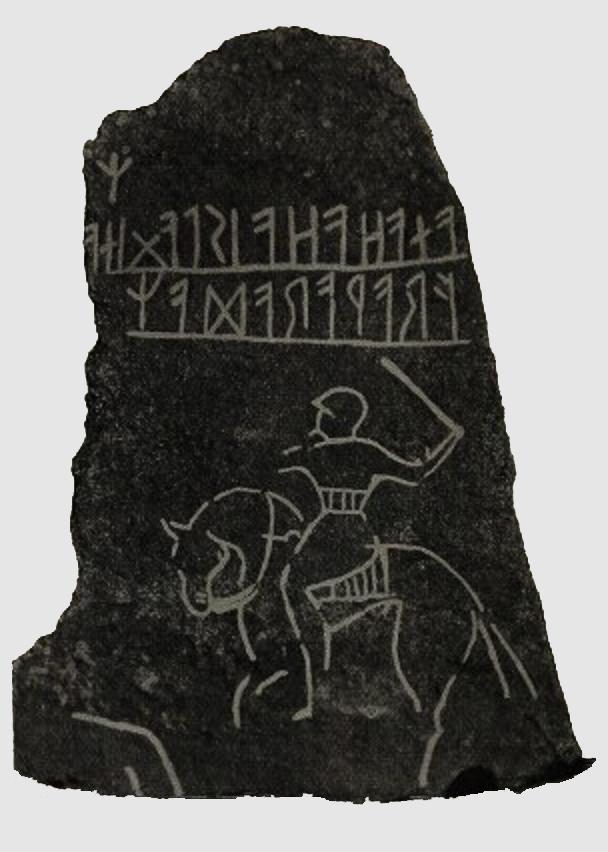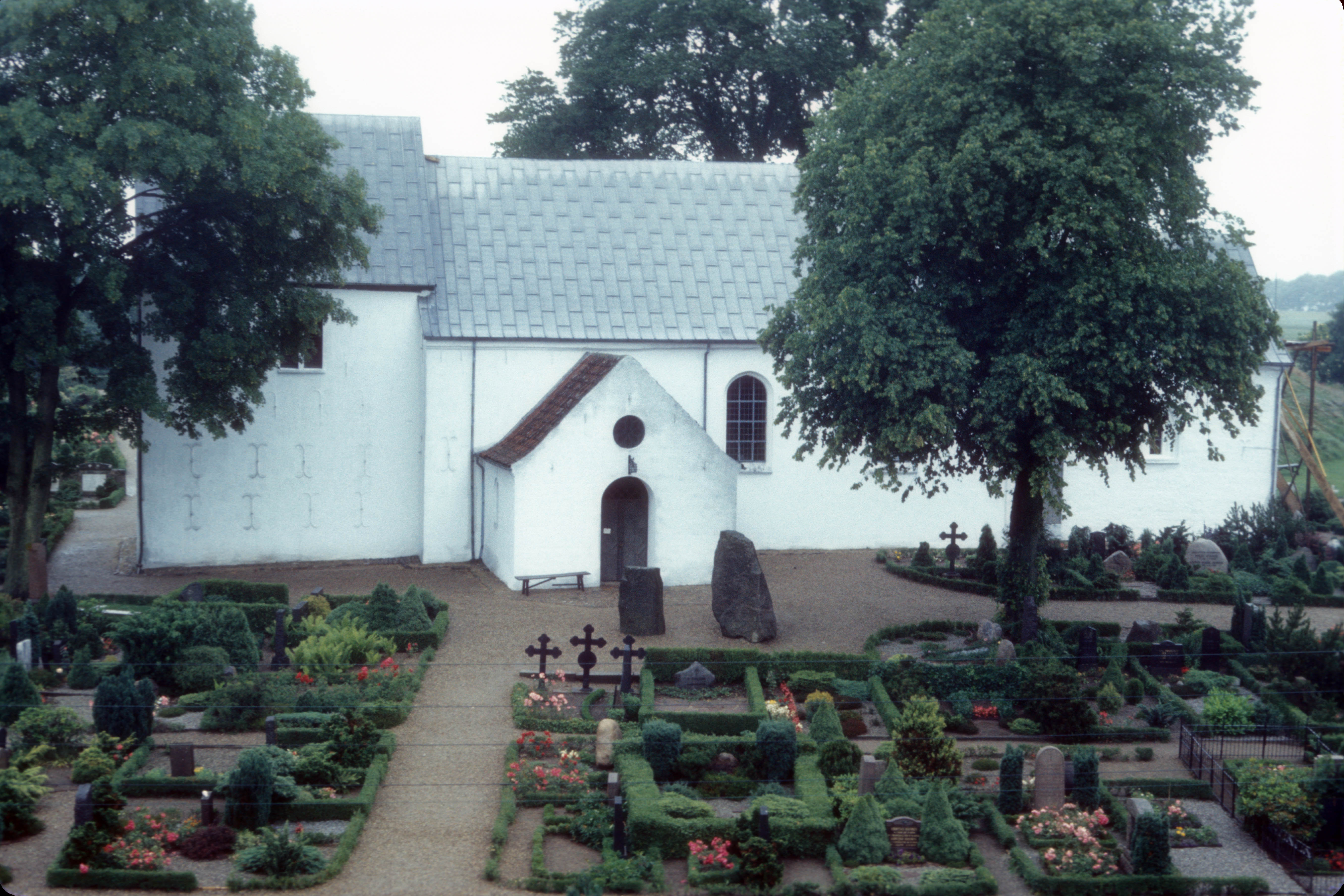|
List Of World Heritage Sites In Denmark
The United Nations Educational, Scientific and Cultural Organization (UNESCO) World Heritage Sites are places of importance to cultural or natural heritage as described in the UNESCO World Heritage Convention, established in 1972. Denmark ratified the convention on 25 July 1979, making its historical sites eligible for inclusion on the list. The first site in Denmark to be added to the list was Jelling Mounds, Runic Stones and Church, inscribed at the 18th Session of the World Heritage Committee, held in 1994 in Phuket, Thailand. Further sites were added in 1995, 2000, 2004, 2009, 2014, 2017, and 2018. As of 2019, Denmark has ten sites inscribed on the list and a further four on the tentative list. Three sites, Kujataa, Aasivissuit – Nipisat, and Ilulissat Icefjord, are located in Greenland, which is an autonomous territory within the Kingdom of Denmark. Seven sites in Denmark are cultural and three are natural. The natural site Wadden Sea is shared with Germany and the Ne ... [...More Info...] [...Related Items...] OR: [Wikipedia] [Google] [Baidu] |
Ilulissat Icefjord
Ilulissat Icefjord ( kl, Ilulissat Kangerlua) is a fjord in western Greenland. Located 250 km north of the Arctic Circle, the Ilulissat Icefjord runs west from the Greenland ice sheet to Disko Bay just south of Ilulissat town. Ilulissat Icefjord was declared a UNESCO World Heritage Site in 2004 because of its natural beauty and the importance of the fast-moving Jakobshavn Glacier in developing the current scientific understanding of anthropogenic climate change. Geography The fjord contains the Jakobshavn Glacier ( kl, Sermeq Kujalleq), the most productive glacier in the Northern Hemisphere. The glacier flows at a rate of per day, resulting in around 20 billion tonnes of icebergs calved off and passing out of the fjord every year. Icebergs breaking from the glacier are often so large —up to a kilometer (3,300 ft) in height— that they are too tall to float down the fjord and lie stuck on the bottom of its shallower areas, sometimes for years, until the ... [...More Info...] [...Related Items...] OR: [Wikipedia] [Google] [Baidu] |
Thailand
Thailand ( ), historically known as Siam () and officially the Kingdom of Thailand, is a country in Southeast Asia, located at the centre of the Indochinese Peninsula, spanning , with a population of almost 70 million. The country is bordered to the north by Myanmar and Laos, to the east by Laos and Cambodia, to the south by the Gulf of Thailand and Malaysia, and to the west by the Andaman Sea and the extremity of Myanmar. Thailand also shares maritime borders with Vietnam to the southeast, and Indonesia and India to the southwest. Bangkok is the nation's capital and largest city. Tai peoples migrated from southwestern China to mainland Southeast Asia from the 11th century. Indianised kingdoms such as the Mon, Khmer Empire and Malay states ruled the region, competing with Thai states such as the Kingdoms of Ngoenyang, Sukhothai Kingdom, Sukhothai, Lan Na and Ayutthaya Kingdom, Ayutthaya, which also rivalled each other. European contact began in 1511 with a Portugue ... [...More Info...] [...Related Items...] OR: [Wikipedia] [Google] [Baidu] |
Harald Bluetooth
Harald "Bluetooth" Gormsson ( non, Haraldr Blátǫnn Gormsson; da, Harald Blåtand Gormsen, died c. 985/86) was a king of Denmark and Norway. He was the son of King Gorm the Old and of Thyra Dannebod. Harald ruled as king of Denmark from c. 958 – c. 986. Harald introduced Christianity to Denmark and consolidated his rule over most of Jutland and Zealand. Harald's rule as king of Norway following the assassination of King Harald Greycloak of Norway was more tenuous, most likely lasting for no more than a few years in the 970s. Some sources say his son Sweyn Forkbeard forcibly deposed him from his Danish throne before his death. Name Harald's name is written as runic ''haraltr : kunukʀ'' (ᚼᛅᚱᛅᛚᛏᚱ ᛬ ᚴᚢᚾᚢᚴᛦ) in the Jelling stone inscription. In normalized Old Norse, this would correspond to ''Haraldr konungr'', i.e. "Harald king". The Latinized name as given in the medieval Danish chronicles is ''Haraldus Gormonis filius'' (Harald, Gorm's son). The ... [...More Info...] [...Related Items...] OR: [Wikipedia] [Google] [Baidu] |
Christianization Of Scandinavia
The Christianization of Scandinavia, as well as other Nordic countries and the Baltic countries, took place between the 8th and the 12th centuries. The realms of Denmark, Norway and Sweden established their own Archdioceses, responsible directly to the Pope, in 1104, 1154 and 1164, respectively. The conversion to Christianity of the Scandinavian people required more time, since it took additional efforts to establish a network of churches. The earliest signs of Christianization were in the 830s with Ansgar's construction of churches in Birka and Hedeby in the 830s. The conversion of Scandinavian kings occurred over the period 960–1020. Subsequently, Scandinavian kings sought to establish churches, dioceses and Christian kingship, as well as destroy pagan temples. Denmark was the first Scandinavian country to Christianize, as Harald Bluetooth declared this around AD 975, and raised the larger of the two Jelling Stones. According to historian Anders Winroth, Christianity ... [...More Info...] [...Related Items...] OR: [Wikipedia] [Google] [Baidu] |
Gorm The Old
Gorm the Old ( da, Gorm den Gamle; non, Gormr gamli; la, Gormus Senex), also called Gorm the Languid ( da, Gorm Løge, Gorm den Dvaske), was ruler of Denmark, reigning from to his death or a few years later.Lund, N. (2020), p. 147''Pilemedia'' (in Swedish), 25 October 2020 [...More Info...] [...Related Items...] OR: [Wikipedia] [Google] [Baidu] |
Runestone
A runestone is typically a raised stone with a runic inscription, but the term can also be applied to inscriptions on boulders and on bedrock. The tradition began in the 4th century and lasted into the 12th century, but most of the runestones date from the late Viking Age. Most runestones are located in Scandinavia, but there are also scattered runestones in locations that were visited by Norsemen during the Viking Age. Runestones are often memorials to dead men. Runestones were usually brightly coloured when erected, though this is no longer evident as the colour has worn off. The vast majority of runestones are found in Sweden. History The tradition of raising stones that had runic inscriptions first appeared in the 4th and 5th century, in Norway and Sweden, and these early runestones were usually placed next to graves. The earliest Danish runestones appeared in the 8th and 9th centuries, and there are about 50 runestones from the Migration Period in Scandinavia. Most runeston ... [...More Info...] [...Related Items...] OR: [Wikipedia] [Google] [Baidu] |
Old Norse Religion
Old Norse religion, also known as Norse paganism, is the most common name for a branch of Germanic religion which developed during the Proto-Norse period, when the North Germanic peoples separated into a distinct branch of the Germanic peoples. It was replaced by Christianity and forgotten during the Christianisation of Scandinavia. Scholars reconstruct aspects of North Germanic Religion by historical linguistics, archaeology, toponymy, and records left by North Germanic peoples, such as runic inscriptions in the Younger Futhark, a distinctly North Germanic extension of the runic alphabet. Numerous Old Norse works dated to the 13th-century record Norse mythology, a component of North Germanic religion. Old Norse religion was polytheistic, entailing a belief in various gods and goddesses. These deities in Norse mythology were divided into two groups, the Æsir and the Vanir, who in some sources were said to have engaged in an ancient war until realizing that they were equall ... [...More Info...] [...Related Items...] OR: [Wikipedia] [Google] [Baidu] |
Burial Mound
Burial, also known as interment or inhumation, is a method of final disposition whereby a dead body is placed into the ground, sometimes with objects. This is usually accomplished by excavating a pit or trench, placing the deceased and objects in it, and covering it over. A funeral is a ceremony that accompanies the final disposition. Humans have been burying their dead since shortly after the origin of the species. Burial is often seen as indicating respect for the dead. It has been used to prevent the odor of decay, to give family members closure and prevent them from witnessing the decomposition of their loved ones, and in many cultures it has been seen as a necessary step for the deceased to enter the afterlife or to give back to the cycle of life. Methods of burial may be heavily ritualized and can include natural burial (sometimes called "green burial"); embalming or mummification; and the use of containers for the dead, such as shrouds, coffins, grave liners, and b ... [...More Info...] [...Related Items...] OR: [Wikipedia] [Google] [Baidu] |
Runestones
A runestone is typically a raised stone with a runic inscription, but the term can also be applied to inscriptions on boulders and on bedrock. The tradition began in the 4th century and lasted into the 12th century, but most of the runestones date from the late Viking Age. Most runestones are located in Scandinavia, but there are also scattered runestones in locations that were visited by Norsemen during the Viking Age. Runestones are often memorials to dead men. Runestones were usually brightly coloured when erected, though this is no longer evident as the colour has worn off. The vast majority of runestones are found in Sweden. History The tradition of raising stones that had runic inscriptions first appeared in the 4th and 5th century, in Norway and Sweden, and these early runestones were usually placed next to graves. The earliest Danish runestones appeared in the 8th and 9th centuries, and there are about 50 runestones from the Migration Period in Scandinavia. Most runesto ... [...More Info...] [...Related Items...] OR: [Wikipedia] [Google] [Baidu] |
Jelling
Jelling is a railway town in Denmark with a population of 3,658 (1 January 2022), located in Jelling Parish, approximately 10 km northwest of Vejle. The town lies 105 metres above sea level. Location Jelling is located in Vejle municipality and Region of Southern Denmark. The town is mainly famous for the Jelling stones, national monuments. Until the Municipal Reform of 2007 on 1 January 2007, Jelling was the capital of Jelling municipality. Jelling was also the only town in the former Vejle County headquarters for a bank – Jelling Sparekasse, which had its headquarters in the town until 2007 when it merged with , headquartered in Grindsted. Jelling Sparekasse's slogan was: "If king Gorm was alive today ... we would probably be the country's National Bank." One source at least claims that Jelling was the capital of an ancient kingdom of Denmark that was known as Jellund. Infrastructure From Jelling it is 56 km to Herning and Silkeborg, 80 km to Aarhus a ... [...More Info...] [...Related Items...] OR: [Wikipedia] [Google] [Baidu] |
Jelling Gr Kl Stein
Jelling is a railway town in Denmark with a population of 3,658 (1 January 2022), located in Jelling Parish, approximately 10 km northwest of Vejle. The town lies 105 metres above sea level. Location Jelling is located in Vejle municipality and Region of Southern Denmark. The town is mainly famous for the Jelling stones, national monuments. Until the Municipal Reform of 2007 on 1 January 2007, Jelling was the capital of Jelling municipality. Jelling was also the only town in the former Vejle County headquarters for a bank – Jelling Sparekasse, which had its headquarters in the town until 2007 when it merged with , headquartered in Grindsted. Jelling Sparekasse's slogan was: "If king Gorm was alive today ... we would probably be the country's National Bank." One source at least claims that Jelling was the capital of an ancient kingdom of Denmark that was known as Jellund. Infrastructure From Jelling it is 56 km to Herning and Silkeborg, 80 km to Aarhus a ... [...More Info...] [...Related Items...] OR: [Wikipedia] [Google] [Baidu] |
Jelling Mounds, Runic Stones And Church
The Jelling stones ( da, Jellingstenene) are massive carved runestones from the 10th century, found at the town of Jelling in Denmark. The older of the two Jelling stones was raised by King Gorm the Old in memory of his wife Thyra. The larger of the two stones was raised by King Gorm's son, Harald Bluetooth, in memory of his parents, celebrating his conquest of Denmark and Norway, and his conversion of the Danes to Christianity. The runic inscriptions on these stones are considered the best known in Denmark. In 1994, the stones, in addition to the burial mounds and small church nearby, were inscribed on the UNESCO World Heritage List as an unparalleled example of both pagan and Christian Nordic culture. Significance The stones are strongly identified with the creation of Denmark as a nation state. Both inscriptions mention the name "Danmark" (in the form of accusative "tanmaurk" () on the large stone, and genitive "tanmarkar" (pronounced ) on the small stone). The larger ... [...More Info...] [...Related Items...] OR: [Wikipedia] [Google] [Baidu] |






